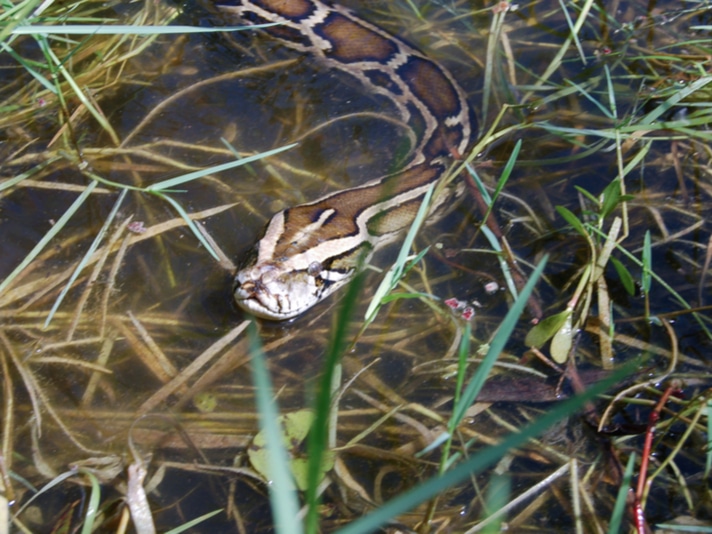Southern Illinois University graduate student Kelly Crandall was working on a study of raccoon and opossum movements in Florida’s Crocodile Lake Natio
Southern Illinois University graduate student Kelly Crandall was working on a study of raccoon and opossum movements in Florida’s Crocodile Lake National Wildlife Refuge when her study revealed a trove of unintended data— that of large python movements in the region.
Crandall’s U.S. Fish & Wildlife Service-funded study was tasked to study these small mammals and the impact of environmental function, using GPS location collars that were attached to these animals.
“I specifically wanted to understand how supplemental food resources, such as feral cat feeding stations and unsecured garbage sources, might influence the movement and behavior of these animals,” Crandall told SIU News. “As native omnivores, raccoons and opossums play a role in the ecosystem which may include seed dispersal or population control of prey species. So, if raccoons and opossums are utilizing anthropogenic resources, I wanted to know how these ecological roles are being affected.”

Heiko Kiera/Shutterstock
In total, Crandall and her adviser, Assistant Professor Brent Pease and researchers with the Crocodile Lake and The North Carolina Museum of Natural Sciences captured 30 raccoons and opossums and outfitted the with GPS collars. They were successfully in collecting data retrieved by the collars until one of the collars was returning abnormal movements. The researchers located the collar inside of a 12-foot long Burmese python (Python bivittatus), which was the reason for the abnormal movements. The 62-pound snake was euthanized and it was revealed to have dozens of eggs.
Cottonmouth Snakes Are Eating Burmese Pythons In Florida Everglades
5 Facts About the Burmese Python
“In this case, the collar recorded over 30 mortality events, but it continued to move around underground, which was very unusual,” Crandall told SIU News. “We theorized that a python might be responsible for these anomalies, but it was great to get confirmation of that theory when we were able to capture the snake.”
Pease told SIU news that the research of placing GPS collars on these animals may also prove to be an effective tracking method for these large constricting snakes.
“Removing this specimen by itself is hugely beneficial to the ecosystem, and now we have documented at least two male snakes on camera in the same area that the female was removed from,” Crandall said. “Now our goal is to find and remove those two males, and the whole incident shows that tracking prey species could be a feasible method of detecting and removing novel pythons from the ecosystem.”
Burmese Pythons and Florida
The Burmese python is one of many non-native species that are found in Florida. The species is well-established in the Florida Everglades and authorities are actively trying to reduce their populations.
Recent evidence of predation of the large constricting snake has shown that the cottonmouth snakes are eating baby Burmese pythons in the Florida Everglades. This is in addition to other animals, including the American alligator (Alligator mississippiensis), the Gulf Coast indigo snake (Drymarchon couperi) and the bobcat (Lynx rufus) that are consumers of these snakes. The Florida black bear (Ursus americanus floridanus) is also possibly a consumer of the Burmese python. The Burmese python is also considered to be the gentle giant among the large constricting snakes kept in captivity. The Burmese python is native to Southern and Southeast Asia and can be found in Burma (now Myanmar), India, Nepal, Bhutan, Bangladesh, Thailand, Laos, Cambodia, Vietnam, northern continental Malaysia, and southern China, It is also found in Hong Kong, and in Indonesia on Java, southern Sulawesi, Bali, and Sumbawa. The Burmese python is listed as vulnerable on the IUCN Red List and is a CITES II Appendix animal. This is primarily due to habitat loss in its native range and over harvesting for the meat and skin trade. In its native range, the large constricting snake is protected in Hong Kong, Thailand, Vietnam, China and Indonesia


